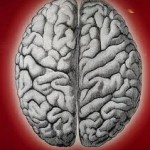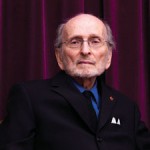From VANCOUVER MAGAZINE, November 14, 2017
Pooya Nabei photo
“I’m going to be the least compelling speaker you’ll hear tonight,” Dr. Evan Wood tells me as we pull up in front of the Anvil Centre auditorium in New Westminster. People are already trickling in for tonight’s event, Recovery Speaks, featuring inspiring personal tales of sobriety on the other side of hellish addiction.
Wood holds a fistful of titles—including professor of medicine at UBC, Canada Research Chair in Inner-City Medicine and head of the province’s newly established response to the opioid crisis, the British Columbia Centre for Substance Use (BCCSU). He’s giving the keynote address tonight—and he’s going to have to thread the needle.
Many of the attendees here are part of the “recovery community”—their journeys involve getting clean largely via the 12 steps. The path involves fierce personal reckoning and surrender to a higher power until the demon slowly loosens its grip and you get your life back, though with eternal vigilance and abstinence as part of the deal.
“Twelve-step facilitation therapy,” hatched some 80 years ago by the American Bill Wilson (or simply Bill W., as he’s known in AA circles) and Dr. Robert Smith, is still the prevailing model for treating addiction, both in the U.S. and in Canada. It’s traditionally a cold-turkey approach: just you and your god and the dark night (with your support group on call). Wood’s own view is that there’s a less torturous and more effective strategy. Reduced to a bumper sticker, it might read: Get off drugs with drugs.
It sounds like pretzel logic: drink your way to sobriety. Use to get clean. Yet this is the chatter on the frontier of addiction medicine—an emerging field promoting evidence-based strategies to treat addiction instead of the entrenched old ways, no matter how beloved they might be.
Abstinence, the evidence increasingly suggests, doesn’t work for many people. More than 80 percent of those who try it will relapse, some studies show.
The rising death toll in the fentanyl epidemic means it’s never been more urgent to come up with something that works more reliably—and to quickly clear a legislative path for it.
The new thinking, Wood’s thinking, is that, far from being a kind of defect of the psyche, addiction may in fact be an evolutionary inheritance—a deeply human trait that turns out to be ill fitted in some ways to the modern era. Wood is exploring pharmaceutical treatments for addiction, pioneering an approach where abstinence isn’t necessarily the end goal, and even using common street drugs to temper its expression.
All of this would seem to cast him as a fox in the henhouse here. And yet Wood is given a warm setup by the man who invited him here tonight, Marshall Smith, a former top B.C. government bureaucrat whose own lost-now-found story is as dramatic as they come.
Ten years clean after a brutal cocaine addiction that left him unemployed and living in a shipping container, Smith is now in full reboot. He runs a non-profit recovery centre on Vancouver Island, coordinates these speaking events and serves as a senior advisor at the BCCSU, a $10-million provincially funded network aimed at developing an evidence-based framework for addiction treatment. Part of the mandate is to tap the “lived experience” of users to develop effective new strategies, which is where Smith comes in. Wood hired him after he realized Smith’s credibility and charisma could help shape the evolving narrative of addiction treatment in B.C.
It was nuts, both men realized, to present themselves as adversaries—penning opposing op-eds in newspapers, pitting harm reduction against abstinence-based recovery—when all that did was make the entire addiction-medicine space radioactive to politicians and potential funders. “We clearly came from different perspectives, we clearly came from different personal experiences and we clearly represented different constituencies of substance-using people,” Smith says. “But…we were in absolute agreement that the system we have now is failing people at best and killing people at worst.”
Wood steps up to the lectern without notes. Bespectacled and self-contained, he has the air of an uncle about to give a toast at Thanksgiving dinner. He tiptoes through a decent joke before quickly establishing a sensitive, commiserating tone that finds common ground with Smith. “The system of addiction treatment in British Columbia isn’t broken,” he says. “There. Is. No. System.” Sufferers are left alone to figure out their options amid a Wild West climate of murky regulations and an absurd circumstance where opioids are prescribed to people who don’t need them and withheld from those who do, one in which rehabbing users are discharged from detox with a handshake and directions to the bus stop, and where wait-lists for rehab facilities can be months long. Every story he’s hearing, in this room and out there in the world, Wood says, every scrap of data he’s gathering, will go into the batter of this new thing they’re cooking at the BCCSU.
He gets a standing O.
In the Giant’s Shadow
I first met Wood, 43, in his upstairs office at St. Paul’s Hospital, tucked away from the emergency room, where fatal opioid overdoses have become an almost daily occurrence.
His eyes were red behind his spectacles: too many short nights in a row. He was wearing a crisply cut suit in banker’s blue—the better to convene high-level meetings with senior staff of health agencies, convey gravitas in media interviews and beat the bushes for funding. That suit, and his quiet, squeaky-clean intensity, evokes Eliot Ness, the famous Prohibition-era Chicago crime fighter. Only their missions are exactly backwards. Wood is at war against the War on Drugs and all it has wrought—from rampant gang violence to a lethally toxic drug supply. He’s less interested in bringing drug criminals to justice than he is in restoring justice by decriminalizing drugs.
But politics are not his official brief. As head of the BCCSU, Wood’s loftiest goal is to change the way we think about addiction. To make us understand it as a kind of contagion—albeit a social rather than viral one. The best strategy to suppress an outbreak? Deploy massive resources at multiple levels all at once. Toss a blanket over the fire so that it sends out no sparks.
Wood’s job one is to wrangle those resources and channel them toward an effective treatment model. That means training doctors and nurses who work with addiction sufferers on which drugs work best to curb cravings and ease withdrawal, when to use them, and how to wean folks off them where appropriate. It means laying out clear options for users who want to get clean and making sure they have access to them. Right now, it means hosting lots and lots of meetings with addicts and their families, the people whose voices most need to be heard.
Wood’s current position is an evolution of his career at the forefront of public health and epidemiology, but he began by tackling a different scourge.
He grew up in West Vancouver, raised by his social-worker mother. His father was an inventor who designed marine navigation systems and who separated from his mother when Wood was two.
Wood approached the medical-health field in a gradually tightening circle. In an undergrad geography degree at UBC, he did a term project that involved mapping the spread of HIV, which nudged him to pursue medical geography—a subfield that looks at airborne and vector-borne illness. He applied for a summer job at the BC Centre for Excellence in HIV/AIDS, where he quickly distinguished himself as a protégé of Dr. Julio Montaner. Hired as a junior research assistant, the young Wood churned out a provocative paper so quickly that Montaner read about it in the newspaper he opened on a flight later that same summer. After Wood knocked off a PhD in epidemiology in 2003, he began publishing at a furious rate. He and Montaner would go on to co-author dozens of influential papers, including two humdingers—one published in The Lancet that helped shape the conversation around AIDS treatment in Africa and another on anti-viral drug strategy, published in The British Medical Journal, that was dubbed Science magazine’s 2011 scientific breakthrough of the year.
In 2005, Wood and his colleague Thomas Kerr—an epidemiologist and now co-director of the BCCSU—found themselves almost single-handedly trying to save InSite, Canada’s first supervised drug-injection site, from a court challenge by the Harper government, which vehemently viewed drug use as a criminal matter. The battle went all the way to the Supreme Court, with Wood and Kerr arguing evidence should trump morality when it came to reducing the risk of disease transmission and overdose.
In the end, their efforts ensured one of the world’s most high-profile experiments in harm reduction, one that has since become a global model in public health, was spared the knife.
In the mid-aughts, Wood interrupted his progress in HIV/AIDS research to go to med school, thinking he would have more impact as a physician. He blitzed through the University of Calgary’s compressed curriculum, putting himself in the comically intense position of being a professor at UBC while a med student in Calgary. He completed his MD in two years and nine months.
Upon returning to Vancouver, however, Wood discovered the fire he was now doubly armed to fight was nearly contained. The death rate from AIDS was down 80 percent, as was the number of new HIV cases. Wood pivoted to apply his harm-reduction strategies to another issue affecting the same at-risk communities he’d come to know through his work with Montaner. He emerged as a leader in addiction medicine around 2010, just as a drug called fentanyl began to show up on city streets, igniting yet another public health crisis and thrusting the issue of addiction into the spotlight.
What Humans Do
In the lobby of the Anvil Centre, during intermission at the Recovery Speaks event, a woman named Lynn buttonholes Wood. Her 23-year-old son is in treatment, battling a heroin addiction. He’s been in an abstinence-based treatment facility for several months and is due home soon.
Wood listens silently, rabbinically. (Privately, he is a little worried about this young man, who is about to be sprung loose, his tolerance low, onto a landscape mined with fentanyl and carfentanil. “Anyone in that position is just a sitting duck for a fatal overdose,” he tells me later.)
Wood allows that some people do manage to get clean all at once just because they decided to, overriding primitive instructions from a brain that has actually been rewired, by trauma or stress or crushing circumstances, to crave solace. But it’s clear which side he believes the science tips toward. The data doesn’t support abstinence as Plan A.
Lynn tells Wood she has discovered a book touting a pharmaceutical “cure” for alcoholism. You simply take a drug—an alcohol antagonist—an hour before you plan to imbibe, and it whisks the reward off the table. So a drink is just a drink, not a ticket anywhere, and you stop at one or two. Eventually the thrill is gone. You can drink socially without fear of drinking to excess—then taper down to complete sobriety, or not. There’s evidence the drug works for opioids too.
This approach would clearly not be embraced by most of the people in this auditorium. But Wood believes the data shows that you can manage addiction without trying to hold it at bay through brute abstinence. It may even be the more humane tack.
“The vast majority of people who have what we would now call substance-use disorder are working, they have families, they’re going about their life, but they have this compulsion to use,” Wood elaborates later. “They may wish to cut down but have difficulty doing so. They might get withdrawal if they stop. But they’re getting along with their lives pretty well.” In the new landscape of addiction treatment that he envisions, “if people come to a health-care provider, we could offer things to help them cut down, or quit, or reduce their cravings.
“This is really part of the human condition. The oldest written records show people using things like alcohol. We could have coffees in front of us. We could be having a glass of wine tonight. I mean, this is what humans do.”
And here is where Wood and Smith—not to mention the people who have shared their heartbreaking but hopeful personal stories tonight—really do have a common cause. They deeply believe that people with substance-abuse issues ought not to be vilified for being a little more demonstrably human than everybody else.
In a sense, people prone to addiction—and “about 50 percent of the burden of substance use is genetic,” Wood says—are simply exquisitely attuned to the promise of rewards. For most of human history that was a good thing. “Being a good reward appreciator,” as the addiction psychologist Anna Rose Childress put it, would have made an individual more, not less, evolutionarily fit.
Only in the last 75 years, when consumer culture began producing a glut of irresistible temptations, did that trait stop delivering benefits and start creating problems. Now that same quester who was once first to try a new food, a new route, a new mate, is now first to fall hard for the shiny poisoned bauble.
Not long ago, certain variants of a gene called OPRM1 were found to be linked to impulsivity and risk-taking behaviour—and a predisposition for drug addiction.
But, Wood explains, OPRM1 is really an attachment gene. “In rhesus macaque monkeys, having the gene correlates to how upset the babies get when they’re separated from their mother.” The gene is thought to work in a similar way in humans.
“So here you have this attachment gene that makes great sense for survival, so you don’t go wandering off a cliff,” Wood says. “But that same gene, if you get prescribed Oxycontin by your doctor—and Oxycontin is extremely rewarding—it can just grab hold of you.”
Wood works the room. He is adept at saying the right things and leaving out the right things. He chats with the private donor who quietly gave $1 million to his centre and with mothers who have watched their children slip through their fingers—grieving moms have become the face of the fentanyl crisis. Wood’s own kids, aged 4 and 9, are still too little to worry about in this respect.
There’s something almost epidemiological about the way he circulates, each point of contact meaningful in some hard-to-measure way. If the root of all addiction is dislocation, as a recovery-community adage has it, then an antidote for addiction is connection. This is a second belief that both camps share. Indeed, you could say that the secret sauce of supervised injection sites like InSite is not that they prevent substance users from overdosing to death right now (though they indeed do that) but that they bring users into contact with potential social lifelines—health professionals whom they can trust to help them get their lives back on track.
Wood has been welcomed here. The kumbaya factor is high. But there remains one major, lingering disconnect: the God thing.
Another Path to Transcendence
The psychoanalyst Carl Jung advised Bill W. that without a spiritual dimension to AA, it would never work—the roots of addiction run too deep. Many in the recovery movement hold fast to that theory, but the required belief in a higher power also prevents many seeking recovery from buying into the program.
Wood believes there may be a way to square the circle here—to bring God into the picture without losing one’s evidence-based bona fides.
The last five or so years have seen a resurgence of clinical interest in psychedelics—the old hippie drugs that can open what Johns Hopkins psychologist Roland Griffiths calls a “spiritual window” through which deep insight might flow.
“The neuroimaging work that’s being done around this, particularly in the U.K., is really fascinating,” Wood says. One way to look at addiction is as a communication failure on a neural level. The most primitive part of the brain—the instinctive, reptilian part that drives compulsive behaviour—“doesn’t typically talk to the frontal lobe that’s really wanting to make changes,” Wood says. “But on psilocybin, those two brain regions are talking like crazy.” In preliminary experimental trials, the deep emotions that hallucinogenic trips unlock seem to help users reach a profound level of insight into their self and their predicament—which can prove a powerful weapon against hard-to-resist cravings.
Indeed, Bill W. himself experimented with LSD after he became sober, and found it to be such an effective spiritual assist he considered making it a standard part of AA meetings. “So the science is showing that we can probably bring about a spiritual awakening for people at a much higher rate this way than our traditional motivational techniques can,” Wood says.
This spring, the BCCSU announced plans to fast-track hallucinogenic experiments. Drugs such as psilocybin, the active ingredient in “magic mushrooms,” LSD and/or MDMA (ecstasy) will be administered in a controlled setting—a dedicated, soundproof room in the BCCSU’s headquarters on Powell Street. (Right now the room is bare and clinical; it’s definitely going to need some groovy-ing up—and a bathroom.)
“It’s just a question now of the clinical protocols and then getting them through ethics,” Wood says. “And then getting these medications made by pharmaceutical labs, storing them and then doing the trials” with trained psychotherapists. “But we hope to be doing them in the next year.”
This isn’t something the BCCSU is trying to sneak past the public. The initiative is openly displayed on the website, along with other research such as “Intentional cannabis use to reduce crack cocaine use in a Canadian setting: a longitudinal analysis.”
The message? The road from “sick” to “well” is not a straight shot. For many, the endgame is total sobriety, but for some it will never be. While working at the heroin prescription clinic on the Downtown Eastside, Wood always asked his clients about their long-term goals. In some cases it was as straightforward as “Hey, if you want to see your kids again, this cocaine thing is going to be an issue.” But for others, say, an alcoholic who just wants to be able to drink socially, “recovery” has a different meaning and requires another protocol altogether. A system that can handle both has yet to be developed.
The endgame, which Wood sees as inevitable, is the decriminalization of all drugs along the lines of what Portugal has undertaken. The fentanyl crisis may eventually seal the fate of the disastrous, larcenously expensive century-old War on Drugs, Wood believes, but we’re not there yet.
“If you look at the situation in the States, the opioid crisis is the biggest issue that’s being debated around health-care reform. The Republican base of middle-class white conservative Americans, they’re being hit hard. And this thing hasn’t peaked yet.
“I think fentanyl is going to lead to pretty dramatic changes in Canada, for sure. I think we’re going to see prescription heroin. Investments in things like therapeutic communities”—long-term, professionally staffed rehab facilities—“on the other end.
“Unfortunately, before that happens, there are going to be thousands more dead people than there should be.”





